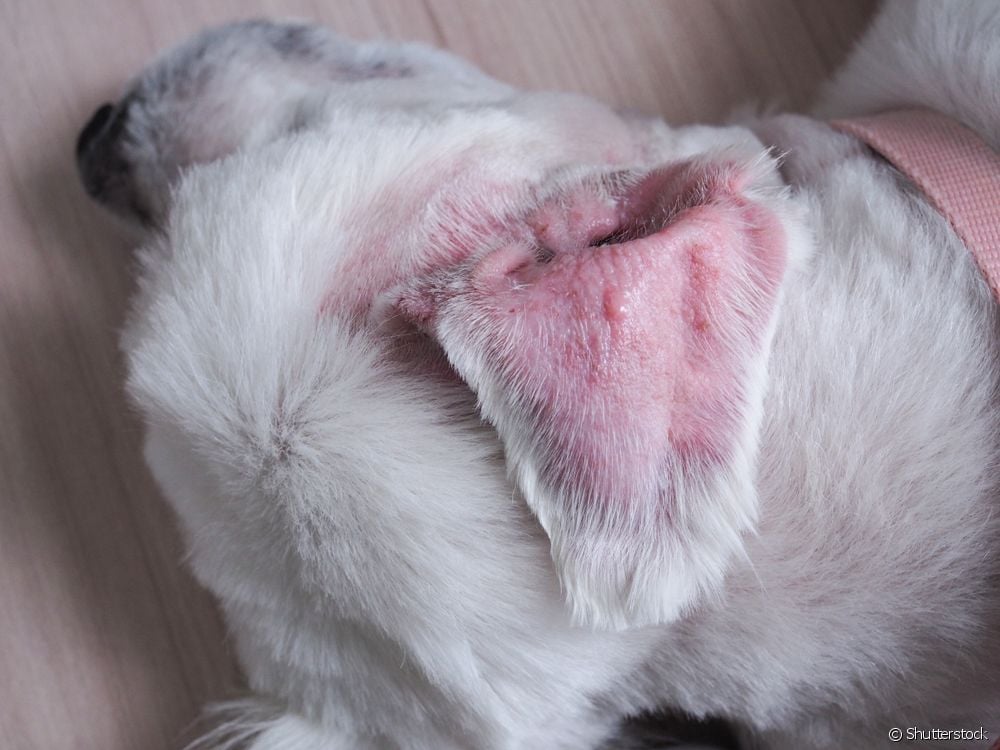Otohematoma in dogs: what is the disease that leaves the dog ear swollen?

Table of contents
Otohematoma is a disease that affects the dog's ear and causes a lot of discomfort in the animal. Although the term is not so well known, otohematoma in dogs is quite common. The swollen dog ear is one of the main symptoms of this condition that usually appears when the dog has another base disease. The Paws of the House talked to Roberto Teixeira, a veterinary doctor specialized in dermatology. He explained what otohematoma is, what causes it and how canine otohematoma should be treated. Check it out!
What is otohematoma in dogs?
Otohematoma directly affects the dog's ear. This disease arises when there is an accumulation of blood in the pinna. "It is a hematoma that occurs inside the ear. There is a detachment between the skin and the cartilage that is inside the ear due to a hemorrhage and blood begins to accumulate inside, causing the otohematoma," explains Roberto. He points out that otohematoma in dogs is always in the ear,not in the dog's ear.
Canine otohematoma is usually a consequence of another disease
The otohematoma appears when there is some underlying cause that causes the animal to have a trauma in the region. Roberto explains that, normally, these traumas happen due to aggression, excessive shaking of the head or when the dog scratches its ears and head excessively. The motivation for these behaviors of shaking and nodding the head excessively is associated with some other problem, such asexplains Roberto: "Sometimes, when the animal has canine otitis, it shakes its head too much and scratches because of it. Or, it has otodectic mange, which causes it to develop otohematoma." When we talk about otohematoma, dogs of any breed can develop the condition. However, it is usually more frequent in breeds that have the pendulous type of dog ear, such as Basset Hound and Vagus.Cocker Spaniel.
Dog with swollen ear: know the symptoms of otohematoma
The dog with swollen ear is the main symptom of otohematoma. Dogs suffer from the accumulation of blood in the region, which ends up causing this swelling. In addition, Roberto highlights other symptoms of otohematoma in dogs: "Pain, hot and reddish ear and, usually, the head is turned to the side of the otohematoma". Most of the time, the disease affects one of the ears, but it can happen that the other ears are swollen.The dog is extremely uncomfortable and therefore needs to be treated quickly. Therefore, when you notice a swollen dog ear and the other symptoms, take your dog to the vet for an evaluation and an accurate diagnosis.
Check out photos of otohematoma in dogs!

Treatment of otohematoma: dog needs to undergo surgery
When an otohematoma is suspected, it is necessary to investigate (through tests and clinical evaluation) what is its underlying cause and then treat the problem. "There are less or more invasive techniques, but it is not a drug treatment: it is a surgical or clinical treatment, making compressive dressings, etc.", explains Roberto. Surgery is essential to remove the substances that are getting into the otohematoma.This can cause the dog's ears to swell up, and a serum flush is also performed. During surgery to treat otohematoma, dogs must be sedated. This treatment is the most effective method of curing canine otohematoma.
In some cases, simple drainage is performed, in which the contents are sucked out by a syringe without the need for anesthesia. This method, however, is most effective when performed early in the otohematoma. It is worth noting that the underlying cause must be treated. That is: if the dog ear swollen by otohematoma has originated due to an otitis, the primary disease needs to be treated.If left untreated, the animal will continue to have the secondary problem....
Preventing underlying diseases will prevent the development of otohematoma
There is no way to specifically prevent otohematoma in dogs, since it arises because of another pre-existing problem. "To prevent otohematoma, one should look for the underlying disease before the otohematoma occurs and treat that disease first," advises Roberto. Therefore, it is very important that diseases such as canine otitis, ear mange or any other that can lead to otohematoma occur.Maintaining frequent veterinary follow-up, paying attention to the behaviors and signs your dog exhibits, and taking him to the doctor whenever you notice something different is the best way to prevent canine otohematoma.
See_also: Smallest dog in the world: meet the Guinness Book record holders
